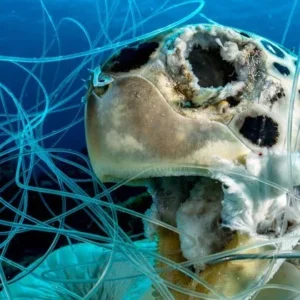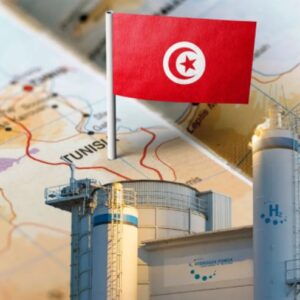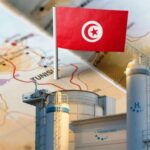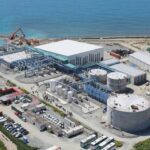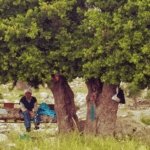It’s a hot July afternoon in Tunisia. Suddenly, air conditioners fall silent, factories cease production, and daily life comes to a standstill. Across the country, power plants have shut down; not because of gas shortages or equipment failures, but because there isn’t enough water to keep the electrical system running.
Water scarcity is no longer just an environmental issue—it’s reshaping the future of energy. In countries like Tunisia, where summers bring rising demand for air conditioning and irrigation, power plants are now shutting down not because of fuel shortages but because there isn’t enough water to keep the system running. This challenge highlights the water-energy nexus: energy systems depend on water for cooling, steam production, and fuel processing, while water services—from pumping to desalination depend on electricity. In water-scarce countries, this creates a vicious cycle: droughts threaten electricity supply, and energy demand strains already limited water resources. From North Africa to the American Southwest, and from India to Mexico, the same story repeats: water scarcity is accelerating the urgency of the energy transition. Yet the debate often overlooks one critical truth—choosing renewable energy is not only about cutting emissions; it’s also about saving water.
This article explores 8 key insights on how water scarcity shapes the energy transition, and why the path forward requires rethinking how we manage both resources together.
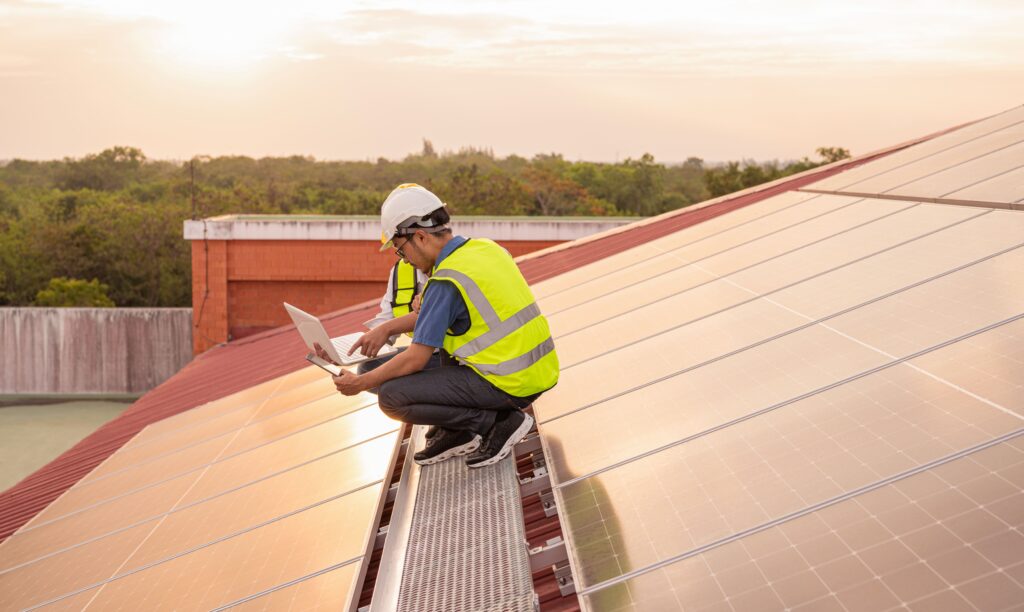
By kelvn_photo Source: Envato
1. Why Supplying Water Consumes More Power Than You Think
Water is humanity’s most fundamental need, and electricity is needed to extract, deliver, and heat that water. This is a significant use of energy, representing4% of global electricity demand.
However, in water-scarce countries, the need for desalination and wastewater treatment can significantly increase this figure, especially for cities in arid regions. Tunisia’s water utility,SONEDE, is already the country’s single largest electricity consumer, representing 3% of national demand. Combined with ONAS, the wastewater treatment utility, Tunisia’s water sector is currently the fastest-growing energy consumer, jumping from 4.1% to 5% in the past eight years.
2. How Droughts Threaten Fossil Fuel and Nuclear Power Production
While water desperately needs energy, energy equally needs water. In water-scarce countries, these pressures are not occasional disruptions but structural risks that need to be better understood.
Besides producing energy from dams, almost all major forms of energy production, from coal to natural gas to nuclear power, depend on water for cooling or steam production. Globally,10% of water withdrawals go to energy activities.
In other words, fossil fuel energy generation is highly vulnerable to droughts. In fact,due to intensifying water scarcity from climate change, more than 50% of the world’s power utilities have already experienced water-related operational and business impacts. When electricity is needed the most, power plants have been forced toreduce production or shut down due to droughts.
3. The Tough Trade-Offs Between Water Supply and Decarbonization Goals
In the dry regions of the world, ensuring a reliable supply of water is a matter of urgency,often more immediate than decarbonization targets. As governments turn to desalination and wastewater treatment to meet demand, fossil fuels can appear to be the quickest and cheapest way to extend the water lifeline for people and the economy.
Yet this reliance comes at a cost: when water depends on fossil fuels, and fossil-fuel power plants themselves depend on water, a shortage in one system can crash both. This isthe water-energy nexus, and it is defined by difficult trade-offs and hard choices, especially for developing countries.
4. The Double Advantage: Cutting Emissions and Conserving Water
As freshwater becomes more scarce, energy choices need to adapt. During droughts, fossil fuel systemsface higher operational costs, reduced efficiency, and forced shutdowns. Most importantly, this means that intense water scarcity further creates comparative advantages for renewable energy technologies.
By switching to renewables, water-scarce countries reduce their emissions while also reducing water-related risks for the energy sector. In short, renewables can help solve two crises at once.
For these reasons, theInternational Energy Agency (IEA) argues that water scarcity should actually accelerate renewable adoption.
5. Which Renewable Energies Consume the Most Water?
When it comes to water,not all renewables are equal. Bioenergy and nuclear energy, for example, depend on large amounts of water. Similarly, concentrated solar power (CSP) can require significant amounts of water for cooling and for cleaning. Most significantly for Tunisia, green hydrogen is made entirely from water.
Based purely on the molecular composition of water, green hydrogen requires a minimum of 9 liters of water to produce 1 kg. Blue hydrogen, which is made from natural gas combined with carbon capture, is worse, since the capture process itself requires a lot of water.
From this perspective, solar PV and wind are the most water-efficient and scalable alternatives to fossil fuels in arid regions.
6. How Integrated Water-Energy Planning Builds Resilience
Luckily, the problems that emerge between water and energy can be transformed into opportunities when they are planned together. That is why more and more governments are experimenting withintegrated nexus planning.
One promising approach is the co-location of energy and water infrastructure, particularly linking renewable energy storage needs with desalination: when surplus renewable electricity is available, all that energy should be used to produce desalinated water. The surplus water can then be stored in a higher elevation or used in hydrogen production, creating a form of energy storage.
In Tunisia, recent initiatives like UNDP’s Water Portfolio are leading the charge in integrated water management. It brings together water, energy, agriculture, and climate planners under one coordinated framework. These kinds of integrated solutions promise to turn two problems into an integrated solution: variable renewable energy output and water scarcity.
Community-Based Water-Energy Systems for Rural Regions
Co-location of water-energy projects is not limited to centralized projects. In water-scarce rural regions, smaller decentralized systems can also deliver sustainable water solutions, bringing water and energy together at the community level.
Solar desalination is emerging as a solution not only to help farmers face droughts but also to make water more accessible to communities far from coasts and centralized infrastructure. By empowering local communities and farmers, these systems also reduce pressure on central governments and can complement national strategies for water and energy security.
Several such innovations are beginning to emerge, but they require a fundamental shift in governance and planning.
Why Water and Energy Must Be Planned Together for Sustainability
The story of the energy transition is also a story about water. While it comes with extra challenges, it also provides a unique incentive to change our current trajectory. Institutions responsible for water and energy often operate in silos, with separate ministries, budgets, and goals. For water-scarce countries, this separation not only reinforces inefficiencies but also makes both sectors more vulnerable.
When water shortages shut down power plants, and when energy imports make desalination unaffordable, the traditional approach to energy in water-scarce countries becomes harder to defend. Planning water and energy together offers a way forward.
Co-locating water and energy infrastructure is just one element. Countries can cut waste, reduce risks, and get more value from every drop of water and every kilowatt of power. A successful energy transition in a water-scarce country would mean creating integrated targets, sharing data between utilities, and collaborating to face challenges. For the water-scarce countries in the Mediterranean and the
Q1: Why is water important for the energy transition?
Water is essential for cooling power plants, producing steam, and generating hydropower. In water-scarce countries, it directly affects energy security.
Q2: How does water scarcity impact fossil fuel energy production?
Fossil fuel and nuclear plants require large volumes of water. During droughts, many plants must reduce output or shut down, leading to energy shortages.
Q3: Which renewable energy sources use the least water?
Solar PV and wind energy are the most water-efficient renewables, making them ideal for arid countries compared to bioenergy, nuclear, or hydrogen.
Q4: Can renewable energy help solve water scarcity?
Yes. By reducing reliance on water-intensive fossil fuels and enabling co-location projects like solar-powered desalination, renewables support water security.
Q5: What is the water-energy nexus?
The water-energy nexus describes how water and energy systems depend on each other. A shortage in one can destabilize the other, especially in dry regions.
Copyright © 2025 Blue Tunisia. All rights reserved

